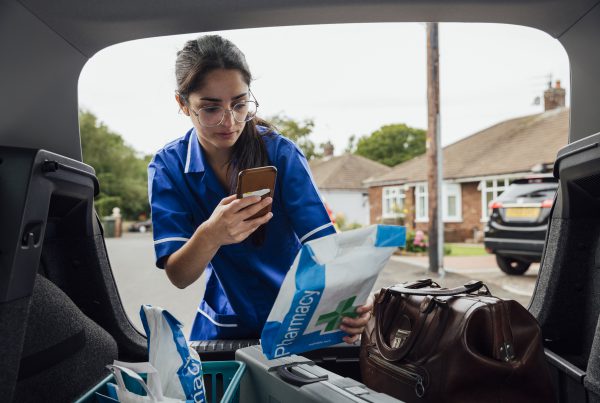Rapid redeployment of staff to support changing care demand, the introduction of timely wellbeing initiatives to support people in their roles, are just two examples of how quickly organisations have had to change this past two years.
What is often unseen to the human eye, are the frameworks which ensure such programmes operate and deliver on their purpose. Policies.
At their best, policies empower teams to do what we need them to do. At their worst, policies sit in a virtual archive, collecting virtual dust. They are hard to engage with and are seen more as a policing tool than an opportunity to provide autonomy and an instrument of change.
So where to start when creating an effective policy?
 We interviewed Chris Day, Director of Engagement at the Care Quality Commission (CQC) to get his perspective on the matter.
We interviewed Chris Day, Director of Engagement at the Care Quality Commission (CQC) to get his perspective on the matter.
Policies at their best, make sure you do what you set out to do. They’re the vehicle that ensures your resources can deliver on the purpose, as a person, as a team and as an organisation.
Why is that important? Well, your purpose will involve at least four groups of stakeholders – the people who use the service, those providing the service, wider stakeholders and ourselves (organisations). Each should have outcome measures for success, but often, organisations measure what they can (‘this policy is out of date’) rather than what really matters (‘how has this changed the culture of the organisation?’). And whilst many organisations are at least measuring what they can as a first step, the truth is, some are not quite there yet and the basics are missed, often because the right processes are not in place or being followed. For example, policies being out of date, not being representative of changes within regulations, or not being adhered by staff.
Ultimately, if you can’t measure your outcomes correctly, there’s no way of knowing just how effective your policy is.
I’ll give you an example from when we were making improvements at CQC.
A few years ago, we used input measures of success. How many inspections we were going to do? What time period are we going to do it in? Who was going to do the inspections? And actually, that matters, but it only matters as a baseline. It doesn’t ensure that you can functionally get an organisation to work. The difference is when you can demonstrate what benefit you’re having on the service. It took us around two years for us to genuinely establish this but it enabled us to adapt our policies to reflect the learning.
How did we achieve it? Here are some steps that we took on our journey to building better policies.
1. Seek agreement on your purpose
The aim is to get all of your stakeholders together in a room to discuss your purpose and ensure that everyone is in agreement on what the organisation is trying to achieve. This will help to build out your policy. The CQC’s purpose is defined in these five well-known questions:
- Are they safe? (Safe: you are protected from abuse and avoidable harm.)
- Are they effective?
- Are they caring?
- Are they responsive to people’s needs?
- Are they well-led?
These categories were the spine of our policy. It helped us to outline what we were doing and why we were doing it.
2. Define what good looks like
Once you have the backbone of your purpose in agreement, the next step is to define what good looks like. In our case, it was for each of those categories.
This needs to be considered from the perspective of each stakeholder, which admittedly can take some time. But once finalized and agreed by all parties, it can create a common perspective of what you want to do.
3. Creating a common perspective
Policies are often seen as a series of rules. But the truth is, policies should not dictate ‘you must do it this way, every time’. It’s more than that. Policies should be reflective on the purpose and help to promote a common understanding.
Let’s face it, not all scenarios are the same, especially in health and care. We need to think about the human on the other side: the person it impacts, so each response should be considered at an individual level, with a person-centered approach.
4. Policies: the enablers
Policies should be tools that enable their stakeholders to understand what good looks like and provide a path for how they can get there.
They need to be understandable. No jargon. At the CQC we’re looking to reduce our guided reading age for our documents to age 12. So a child, 12 years of age, should be able to pick up a policy and understand what it’s trying to achieve.
If the person reading it can’t be clear on what the purpose is, how are they expected to use it as a tool for positive outcomes?
What steps do you follow?
Do you have any additional recommendations to Chris’ considerations? Your recommendations could help create a ‘Top Tips’ document which can be issued to health and care organisations across the UK.
To share your process or recommendation, or provide your opinion on any of the above considerations provided, simply complete the form below and be part of ‘Tools over Rules’ change.




